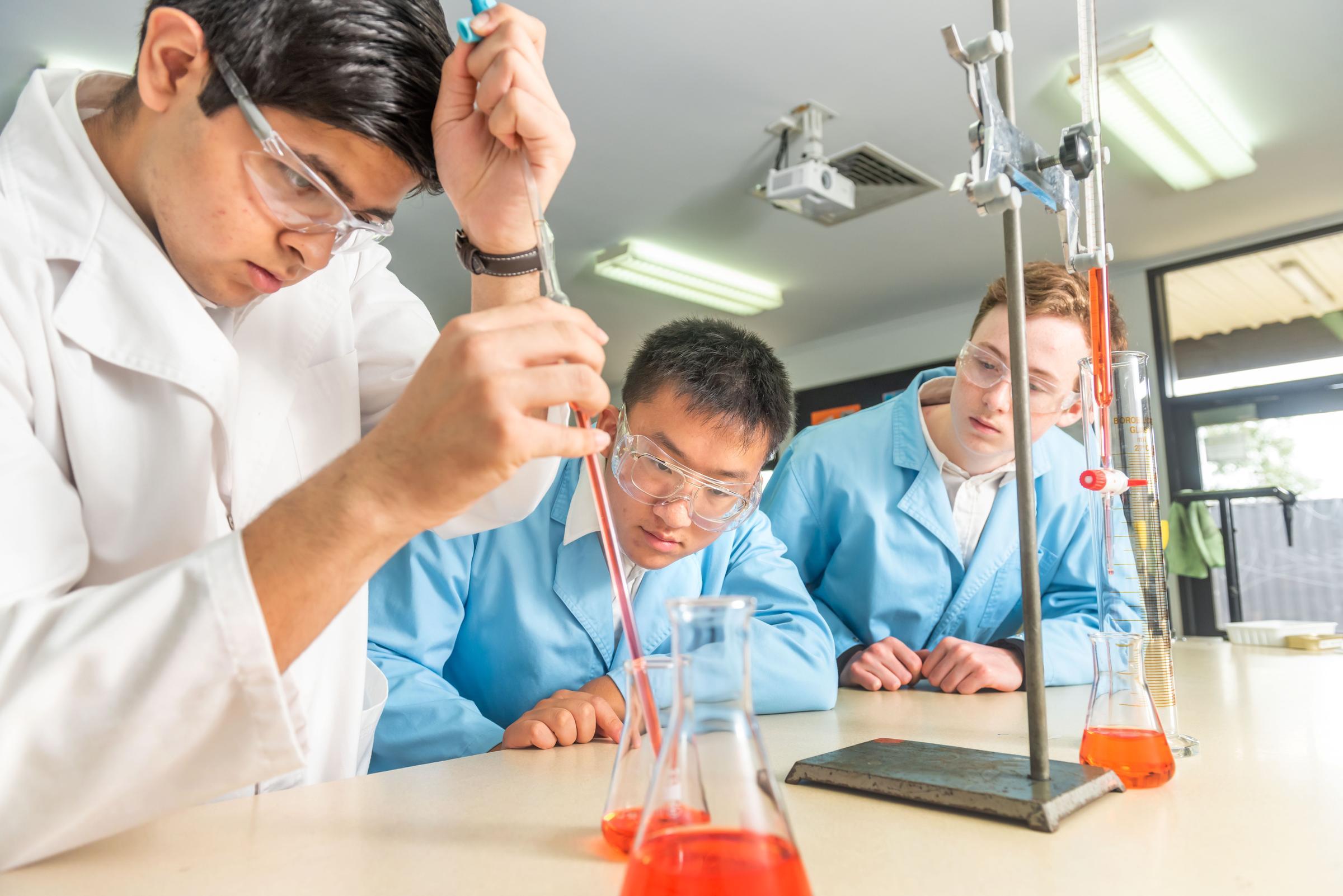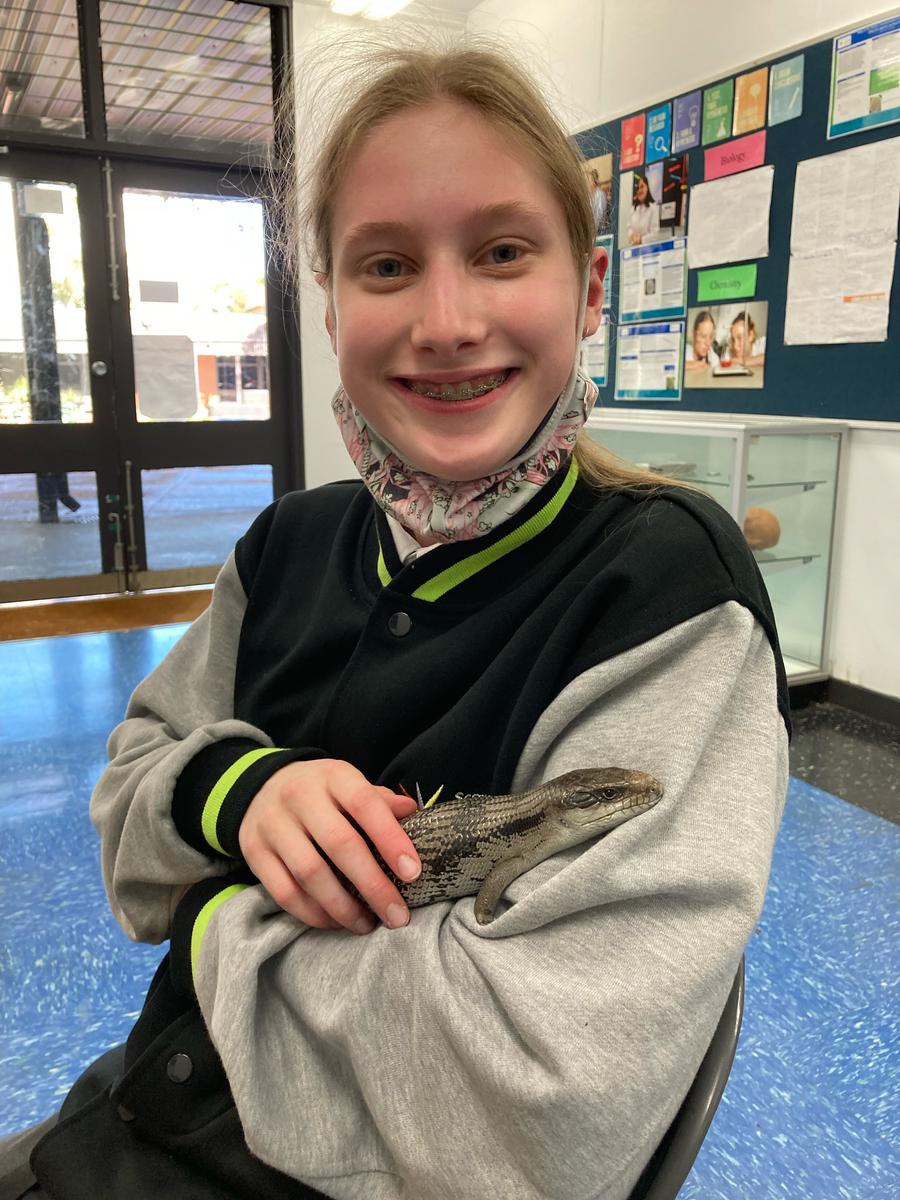Science

Return of our Lizards!
Term 2 has seen the return of our two blue-tongue lizards to the Science foyer. They have been absent since our Covid lockdowns started in 2020 and many students have never even seen them.
We’ve seen a lot of interest from students since their return and they have settled back into their habitat very well. Despite being very old by lizard standards, nearly 20 by our estimates, these blue-tongues have been quite sprightly and eating well even as they head toward their brumation period (lizard hibernation through winter). We’ve supervised several students handling the lizards carefully and they have been very friendly as always. Students have described them as being “very cute”.
Blue tongues are the largest member of the skink family, and can grow up to 60 cm long and weigh up to a kilogram. While we think of them as being native to Australia, they are also native to parts of Indonesia. They are named after the colour of their tongues which is often deployed to ward off predators. Blue tongues are well adapted to urban environments, and people in more northern cities with warmer climates may have wild blue tongues living at their properties.
John Healy
Science Coordinator

